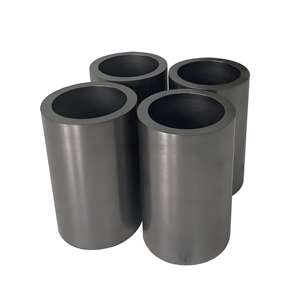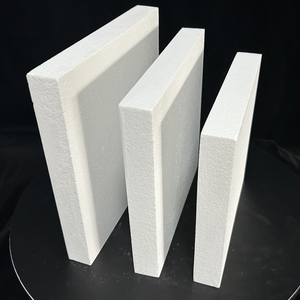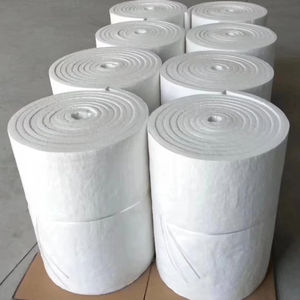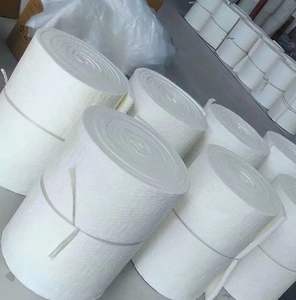Professional industry ceramic supplier, silicon nitride, silicon carbide, aluminum nitride and any other kinds of ceramics.
PRODUCT PARAMETERS
Description
Overview of Refractory ceramic fiber blanket
Refractory ceramic fiber blanket is a lightweight, high-temperature insulation material composed primarily of alumina-silica. It is manufactured through a melting and spinning or blowing process, resulting in a flexible, wool-like textile. This material is engineered to provide exceptional thermal management, conserving energy and protecting equipment in extreme temperature environments across various industries.
Features of Refractory ceramic fiber blanket
-
Excellent Thermal Stability: Withstands continuous operating temperatures up to 1260°C (2300°F) and higher for certain grades, with minimal shrinkage.
-
Low Thermal Conductivity: Provides highly efficient insulation, reducing heat loss and improving energy efficiency.
-
Lightweight & Low Heat Storage: Offers low thermal mass, enabling rapid heat-up and cool-down cycles for improved process control and energy savings.
-
Thermal Shock Resistance: Highly resistant to damage from rapid temperature changes.
-
Excellent Flexibility & Resilience: Can be fabricated into blankets, boards, papers, and textiles to fit complex shapes and applications.
-
Good Chemical Stability: Resists attack from most corrosive agents, except strong alkalis and hydrofluoric acid.
Specification of Refractory ceramic fiber blanket
Refractory ceramic fiber blankets provide essential heat protection. They handle very high temperatures. These blankets resist heat up to 1260°C or even 1430°C. The exact temperature depends on the blanket type. This makes them perfect for furnaces, kilns, boilers, and pipes. They stop heat loss effectively.
The material feels soft and flexible. Workers can cut it easily. They can shape it to fit complex surfaces. This ensures good coverage. Installation is straightforward. The blankets come in rolls. Common roll sizes are 7200mm long, 610mm or 1220mm wide. Thickness options are important. You find 25mm, 50mm, and sometimes 100mm thick blankets. Density affects performance. Standard densities are 96kg/m³ or 128kg/m³. Higher density offers better strength. Lower density gives slightly better insulation sometimes.
The main ingredient is alumina-silica. This gives the high heat resistance. The blankets contain very little binder. This prevents smoke and smell when first heated. The fiber structure traps air. Trapped air is the key insulator. Thermal conductivity is very low. Heat moves through it slowly. This saves significant energy. The blankets stay stable. They don’t shrink much over time. This keeps insulation gaps small.
Chemical resistance is good. The blankets handle most furnace atmospheres. They resist acids and alkalis reasonably well. Physical strength matters. These blankets resist tearing. They handle vibration and light impact. They are not load-bearing. Avoid heavy crushing force. They produce very little dust. This improves safety for installers. These blankets are inorganic. They do not burn. They support passive fire protection.
Applications of Refractory ceramic fiber blanket
Refractory ceramic fiber blankets resist very high heat. They are made from melted alumina and silica spun into flexible fabric. This material handles temperatures well over 2000°F easily. People like them because they insulate extremely well. This keeps heat inside furnaces and kilns. It saves a lot of energy. Less fuel is needed to keep things hot.
These blankets are lightweight. They are much lighter than old-fashioned firebricks. This makes building and fixing furnaces faster. Workers install them easily. They can be cut with simple knives. Workers shape them to fit complex furnace parts. They fit around pipes and corners without trouble. This saves time and money.
The main job is lining industrial heaters. They protect the furnace steel shell. This stops the metal from overheating and failing. Boiler makers use them too. They insulate the hot areas inside power plant boilers. Petrochemical plants rely on them. They line cracking units and reformers. The oil and gas industry uses them in heaters and exhaust systems. They work in many tough spots.
These blankets stay strong under intense heat. They don’t crack or break like bricks can. They resist chemical damage from fumes. This means they last a long time. Furnaces need less fixing. Factories avoid costly downtime. The blankets are also strong for handling. They don’t tear easily during installation. Workers feel safe moving them.
Installation needs care. Workers must wear masks. The fibers are safe once installed. But loose fibers can irritate skin and lungs during setup. Proper safety gear is essential. Once sealed in place, the blankets are safe and reliable. They form a strong, continuous heat barrier.
Company Profile
Tanki New Materials Co.Ltd. focus on the research and development, production and sales of ceramic products, serving the electronics, ceramics, chemical and other industries. Since its establishment in 2015, the company has been committed to providing customers with the best products and services, and has become a leader in the industry through continuous technological innovation and strict quality management.
Our products includes but not limited to Aerogel, Aluminum Nitride, Aluminum Oxide, Boron Carbide, Boron Nitride, Ceramic Crucible, Ceramic Fiber, Quartz Product, Refractory Material, Silicon Carbide, Silicon Nitride, ect. please feel free to contact us.

Payment Methods
T/T, Western Union, Paypal, Credit Card etc.
Shipment Methods
By air, by sea, by express, as customers request.
5 FAQs of Refractory ceramic fiber blanket
What is a refractory ceramic fiber blanket?
It’s a flexible insulation material. It handles very high temperatures. People use it in furnaces, kilns, and boilers. It looks like a thick, white or off-white blanket. It feels soft but strong.
How hot can this blanket get?
Different types handle different heat levels. Standard blankets work up to about 2300°F (1260°C). Higher-grade blankets can handle even more heat, up to 2600°F (1425°C) or more. Always check the specific blanket’s rating before buying.
How do you install it?
You cut it to fit your space. You use sharp knives or scissors. You attach it to the furnace or kiln wall. Metal anchors or special adhesives hold it in place. Wear gloves and a mask during installation. The fibers can irritate skin and lungs.
Is it safe to handle?
Be careful. The fibers are small. They can irritate your skin, eyes, and lungs. Wear protective gear: gloves, long sleeves, safety glasses, and a good dust mask. Work in areas with good airflow. Follow all safety instructions on the product label.
How long does it last?
It lasts a long time if installed correctly. It resists heat damage very well. Physical damage or chemical exposure can shorten its life. Check it regularly for tears, wear, or compression. Replace damaged sections quickly to keep good insulation.
REQUEST A QUOTE
RELATED PRODUCTS

Low thermal conductivity 96-128°C density ceramic fiber blanket board, 1450°C/1260°C 25mm/50mm refractory material

Highly refractory and spark-resistant vermiculite-coated ceramic Fiber cloth

Lightweight ceramic fiber board, easy to install and handle, 40% labor time reduction for cutting refractory ceramic parts

Refractory Ceramic Fiber Paper for Insulation and Refractory Materials

1260°C fire-resistant ceramic fiber fabric, aluminum silicate cloth, vermiculite-coated ceramic fiber cloth



